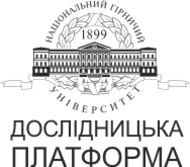№80-14
Prerequisites to the introduction of the effect of microwave radiation on the properties of cement-based solutions and concrete
G. Ivanova1, S. Olishevska1, K. Kravchenko1, V. Kulivar1
1Dnipro University of Technology, Dnipro, Ukraine
Coll.res.pap.nat.min.univ. 2025, 80:142–149
Full text (PDF)
https://doi.org/10.33271/crpnmu/80.142
ABSTRACT
Purpose. The impact of conditions and parameters of microwave radiation on the change in the physical and mechanicalproperties of cement materials has been studied, particularly on the stability of their strength characteristics.
The methods. The following methods were used: analysis of modern scientific concepts of microwave radiation application in industrial purposes, considering the safety of its use; study of the impact of microwave heating on the kinetics of product properties; determination of the compressive strength limit of mortars and concretes; comparative analysis. The samples were cement-sand cubes with dimensions of 5×5×5 cm, produced according to standards, and cured until they achieved their design strength. When applying UHF radiation to the samples, it was considered that its influence at early stages could disrupt the hydration processes.
Findings. The results of the study on the impact of microwave radiation on the change in physical and mechanical properties of building mortars and concretes based on cement are presented. The parameters of microwave radiation that influence the physical and mechanical properties of cement-sand samples have been identified. The application of microwave radiation during the removal of water from the internal layers of the mortar mixture leads to an increase in the strength of cement mortars and concretes. The energy consumption when using UHF technologies is lower compared to thermal treatment.
The originality. Dependencies between the power and duration of UHF radiation and the strength characteristics of the samples have been established. Quantitative parameters of the radiation affecting the process of their destruction have been determined.
Practical implementation. The research conducted will expand the scientific basis for justifying the use of microwave radiation to influence the properties of cement mortars and concretes. The impact of UHF radiation can accelerate the hardening process of cement mixtures. This can be useful in conditions where rapid hardening of the material is required, such as in emergency construction work. However, the acceleration of the reaction may lead to a decrease in the quality of the final product if all parameters are not carefully controlled.
Keywords: safety of UHF radiation use, parameters of microwave radiation, cement-sand cubes, physical and mechanical properties, strength.
References
1. Serdiuk, V. R., & Sidlak, O. S. (2016). Aktualnist vykorystannia nvch vyprominiuvannia v tekhnolohii budivelnykh materialiv. Suchasni tekhnolohii, materialy i konstruktsii v budivnytstvi, (2), 10–15.
2. Ivanova, H.P., Kovalenko, V.V., & Barsukova, S.O. (2018). Doslidzhennia vplyvu nvch-vyprominiuvannia na budivelni rozchyny i betony. Forum hirnykiv, , 137–142.
3. Satish, H., Ouellet, J., Raghavan,V., & Radziszewski, P. (2006). Investigating microwave assisted rock breakage for possible space mining applications, Mining Technology, 115, 34–40. https://doi.org/10.1179/174328606x101902
4. Jones, D. A., Kingman, S. W., Whittles, D. N., & Lowndes, I. S. (2005). Understanding microwave assisted breakage. Minerals Engineering, 18(7), 659–669. https://doi.org/10.1016/j.mineng.2004.10.011
5. Nekoovaght, P., Gharib, N., & Hassani, F. (2015). Microwave Assisted Rock Breakage for Space Mining. Earth and Space 2014, 414–423. https://doi.org/10.1061/9780784479179.044
6. Nekoovaght, P., Gharib, N., & Hassani, F. (2016). The influence of microwave irradiation on rocks for microwave-assisted underground excavation. Journal of Rock Mechanics and Geotechnical Engineering, 8, 1–15. https://doi.org/10.1016/j.jrmge.2015.10.004
7. Toifl, M., Hartlieb, P., Meisels, R., Antretter, T., & Kuchar, F. (2017). Numerical study of the influence of irradiation parameters on the microwave-induced stresses in granite. Minerals Engineering, 103–104, 78–92. https://doi.org/10.1016/j.mineng.2016.09.011
8. Rymar, T. E. (2021). Rozrobka naukovykh osnov NVCh-tekhnolohii kompozytsiinykh materialiv dlia teploizoliatsii na osnovi ridynnoho skla (dys. ...d-ra tekhn. nauk) Skhidnoukr. nats. un-t im. Volodymyra Dalia; Ukr. derzh. un-t zalizn. transp. Kharkiv, Ukraina. http://lib.kart.edu.ua/handle/123456789/8526
9. Serdiuk, V. R., & Sydlak, A. S. (2015). Teoretycheskye predposylky vnedrenyia SVCh-yzluchenyi pry aktyvatsyy zoly-unos dlia betonnykh smesei. Budivelni materialy, vyroby ta sanitarna tekhnika: nauk.-tekh. zb., 56, 104–110.
10. Ivanova, H.P., Hapieiev, S.M., Shapoval, V.H., Zhabchyk, K.S., &Zhylinska, S.R. (2021). Stability problems of large sized multi elements rod structures. Energy- and resource-saving technologies of developing the raw-material base of mining regions: multi-authored monograph. UNIVERSITAS Publishing. https://ep3.nuwm.edu.ua/20375/
11. Ivanova, H.P., &Zhabchyk, K.S. (2021). Perspektyvy vykorystannia metalizovanykh okatkiv v yakosti zapovniuvacha dlia vazhkykh betoniv. Zbirnyk naukovykh prats NHU, 67, 96–103. https://doi.org/10.33271/crpnmu/67.096
12. SanPiN2.2.4/2.1.8.055 96 «Elektromahnitni vyprominiuvannia radiochastotnoho diapazonu (EMV RCh)».
13. DSTU B V.2.7-114-2002. Sumishi betonni. Metody vyprobuvan. (2002). Derzhbud Ukrainy.
14. DSTU B V.2.7-187:2009. Budivelni materialy. Tsementy. Metody vyznachennia mitsnosti na zghyn i stysk. (2009). Minrehionbud Ukrainy.




